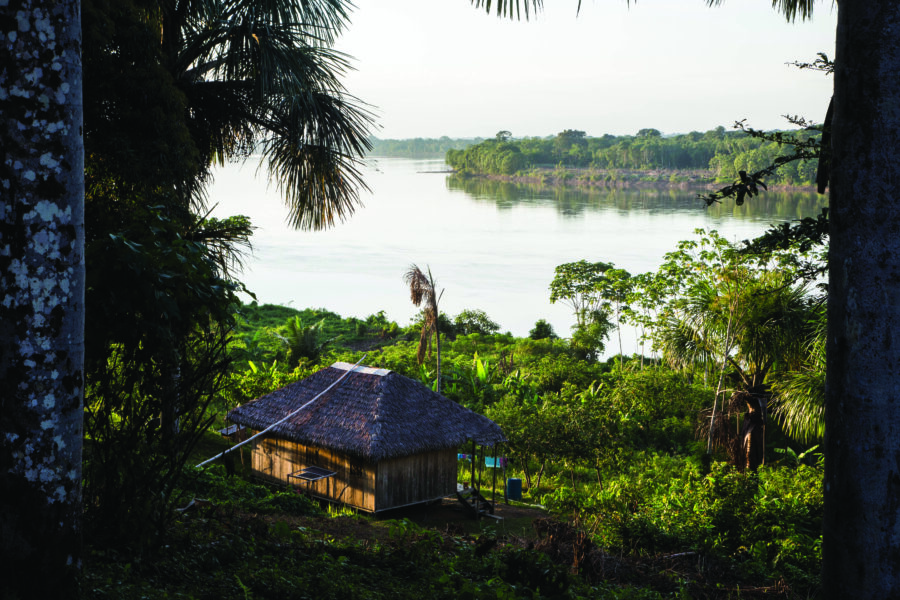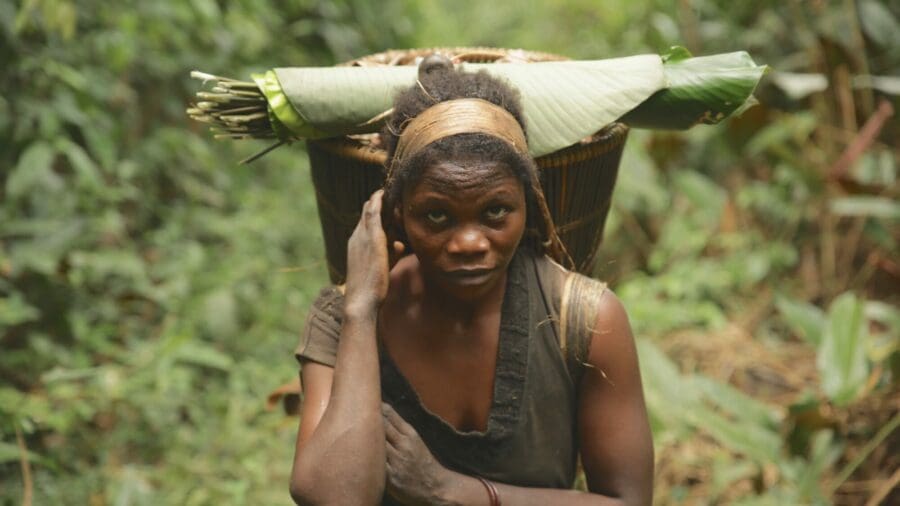As part of its Community Land Rights and Conservation Finance Initiative (CLARIFI), Rights and Resources Initiative (RRI) is working with the Global Alliance of Territorial Communities (GATC) and Campaign for Nature (C4N)—with a grant from the Bezos Earth Fund—on a project to strengthen the recognition of Indigenous Peoples’ and local communities’ land rights in the Congo Basin in Africa. The target countries for this project include the Democratic Republic of Congo, the Republic of Congo, and Gabon.
The project, titled as the “Partnership for People, Nature and Climate,” aims to strengthen community land rights and conservation at the local level between 2022 and 2025, and advance the Congo Basin’s achievement of global conservation, climate, and development goals.
Collective land and forest tenure for biodiversity conservation
For millennia, the Congo Basin’s Indigenous and local communities have contributed to the conservation of forest ecosystems and biodiversity through their traditional knowledge and practices. This CLARIFI project aims to strengthen the recognition of collective land and forest rights of these communities, particularly of the women among them, by securing their rights over 3,000,000 hectares of land in the three target countries.
This supports the global objective of protecting 30% of Earth’s lands and waters by 2030 while respecting the tenure rights of over 126 million people who have lived on these lands for more than 50,000 years.
In particular, Central Africa and the Congo Basin’s forests are strategic to global efforts to reduce greenhouse gas emissions since it is estimated that these ecosystems store almost 40 Gt of carbon. Data collected as part of this project in the Massaha area of Gabon show a significant biomass (on average 378.40Mg per hectare; that is, a carbon storage capacity of 172.55Mg C per hectare), as well as significant fauna diversity despite the absence of formally protected areas.

To promote conservation efforts in the Congo Basin beyond its established protected areas, the project focuses on the emergence of alternatives to fortress conservation and securing of collective forest and land tenure for the region’s Indigenous Peoples and local communities to halt the rise of threats to forest biodiversity.
With financial support from the Bezos Earth Fund, the project has undertaken concrete actions demonstrating alternatives to conservation approaches that exclude communities. In some places, its interventions have halted illegal logging, mining, and oil companies’ actions whose activities in forest areas would have accelerated land and soil degradation and weakened the livelihoods of the communities who depend on it.
Since the launch of activities in 2022, 39 initiatives have been implemented by Indigenous and local community-led organizations in the Democratic Republic of the Congo (DRC), the Republic of Congo (RoC), and Gabon under the project. These initiatives are helping to promote communities’ collective land rights and conservation activities through a variety of measures such as participatory mapping, community forestry, conservation of community areas and heritages, and local land agreements.
In sum, these actions have considerably reduced the threat of deforestation on more than 1.1 million hectares of forestland often coveted by mining, forestry, and agro-industry.
For example, in BOMBWANZA, DRC, the project supported the Ligue Nationale des Associations Autochtones Pygmées au Congo (LINAPYCO) in securing Indigenous Peoples’ land rights over more than 100,000 hectares. It also protected 14 of the 15 villages in the secured area from illegal industrial logging and other forms of forest conversion.
In addition, the inclusion of women in the Partnership’s activities, often marginalized by customary practices, has strengthened their power in land management, thus promoting the adoption and reinforcement of sustainable practices such as agroforestry and landscape restoration as well as combating climate change and improving gender justice and community resilience.
Key impacts
Gender-justice: The project is promoting the inclusion of women in processes to secure rights and strengthen community livelihoods in the DRC and RoC, notably by making value chains for crops such as cassava, plantain and corn, and recycling of plastic waste more inclusive and gender equal.
Conservation: Field surveys, cultural and spiritual festivals, advocacy, land-use planning dialogues, and conflict resolution techniques have helped to promote Other Effective Conservation Measures by Zone (OECMs) to encompass community-based governance of land and forests.
- In the DRC, following a workshop organized by RRI coalition members in Kinshasa on April 24–26, 2024, the government committed to drawing up a national strategy for nature conservation outside of protected areas. This strategy is expected to reinforce existing government reforms in favor of inclusive and rights-based conservation in the country.
- In Massaha, Gabon, the project helped put a halt to logging to preserve more than 400,000 hectares of forestland that was once home to conflict and biodiversity destruction.
- In RoC, an Indigenous-led organization worked with the land management ministry to map over 250,000 hectares of community forestland in the Likouala and Sangha departments. The mapping initiative aims to create a collective community zone to conserve the area’s biodiversity—which includes elephants, gorillas, monkeys, birds, crocodiles, and a large quantity of fish preserved by communities for centuries through their traditional lifestyles.
Direct access to funding: The project promotes capacity building and community self-determination. Of all the RRI coalition projects currently underway in French-speaking Africa, 40% are being implemented by organizations that have never received international funding before the start of the project.
Conclusion and going forward
Between 2022 and 2024, the Partnership for People, Nature and Climate helped increase the land area recognized for Indigenous Peoples and local communities by 1.1 million hectares in the Congo Basin. It also protected thousands of people from forced eviction and helped ensure fair and adequate compensation in the absence of free, prior and informed consent (FPIC).
However, despite this progress, there is still a long way to go: scaling up the activities being carried out in the DRC, RoC, and Gabon—and beyond—is urgently needed to safeguard this interdependent ecosystem. To accelerate the impact of the Partnership and to reduce armed conflicts linked to cross-border displacement, donors, policymakers and development allies in the Congo Basin must continue to support the implementation of simple community forest management plans and land use planning with a focus on restoring degraded areas, as well as continued advocacy for land and forest governance policy reforms in the region.







